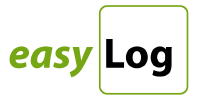For a growing number of people, going to work doesn’t mean travelling to the same place at the same time every day. These days even smaller employers usually offer flexible hours and homeworking, while bigger companies are increasingly moving parts of their business to specialist remote offices. In fact, global market analysts IDC predict that by 2013 there will be 129.5 million mobile workers inWestern Europe– that’s more than the number of traditional workers.
According to IDC, mobile workers can be broadly defined as office-based, non-office-based and home-based. But in real life it’s a bit more complicated. We have discovered from working with our wide client base that mobile workers come in many and varied forms – and they are becoming more diverse all the time.
This makes choosing an appropriate mobile worker tracking and attendance recording solution difficult to say the least. So we have put together this four-point plan to make the process easier.
1. One size does not fit all
Do an instant audit of your mobile workers and break down their activities. Categorise them according to the extent of their mobility – for example, do they:
- Always work from home?
- Check in to an office daily or just from time to time?
- Work at a range of company or client sites?
Also take a note of the numbers in each category and how often each employee visits a location. This should give you a picture of the diversity of your workforce and the kind of attendance system, or systems, you’ll want. For instance, you’ll probably need to consider whether staff arrive at a work location individually or in groups; if they are occasional, part-time workers or regular, full-time staff; if you need instant notification of their arrival or can receive the clocking record later; and whether you might need more than one monitoring system for different employees.
2: Make your investment count
Of course, there are cost-implications to take into account, too. For example, if you have staff who work for just a few hours a week at a particular location, you are unlikely to want to invest in a state-of-the-art visit tracking system based on smartphones or a biometric hand-scanner.
But just how do you work out which attendance monitoring hardware offers the best value for money? We always find it helps to decide where your main cost lies. If your workers are attending multiple sites on a regular basis, for example, it’s likely to be with the employees. But if you have a variety of staff making irregular visits to a single location, you should probably focus your investment on the site.
3: Keep an eye on the bigger picture
So you’ve found what looks to be your ideal attendance monitoring solution and it’s the right price – but are you sure it really meets your needs? What looks good on paper can sometimes be a let down in the field. For instance, can the system cope with more than one employee starting work at the same time? And what about ongoing costs? Have you got your clients’ permission to install terminals at their sites? And is the necessary infrastructure in place? It’s easy to overlook details like this when you have so much ground to cover.
The best approach is to look at what’s required from every point of view – your employees’, your clients’ and your own – before you make a decision. You may end up compromising on some details, but the system you choose has to work for everyone involved if it’s to be a success.
4: Big is not necessarily better
You may start off wanting an all-singing, all-dancing fully-integrated staff scheduling system with full payroll analysis and client invoicing functions, but experience shows that such complex, all-encompassing solutions are likely to prove a disappointment. Staff often have too little time or inclination to learn to use them properly and managers struggle to implement such a major project.
The issue of implementation is one that you need to keep in mind throughout the selection process. Sometimes starting smaller and developing your system as your needs change can be the most effective way forward. It’s easier to manage and, in an increasingly joined-up world, the best way to take advantage of future technology.
